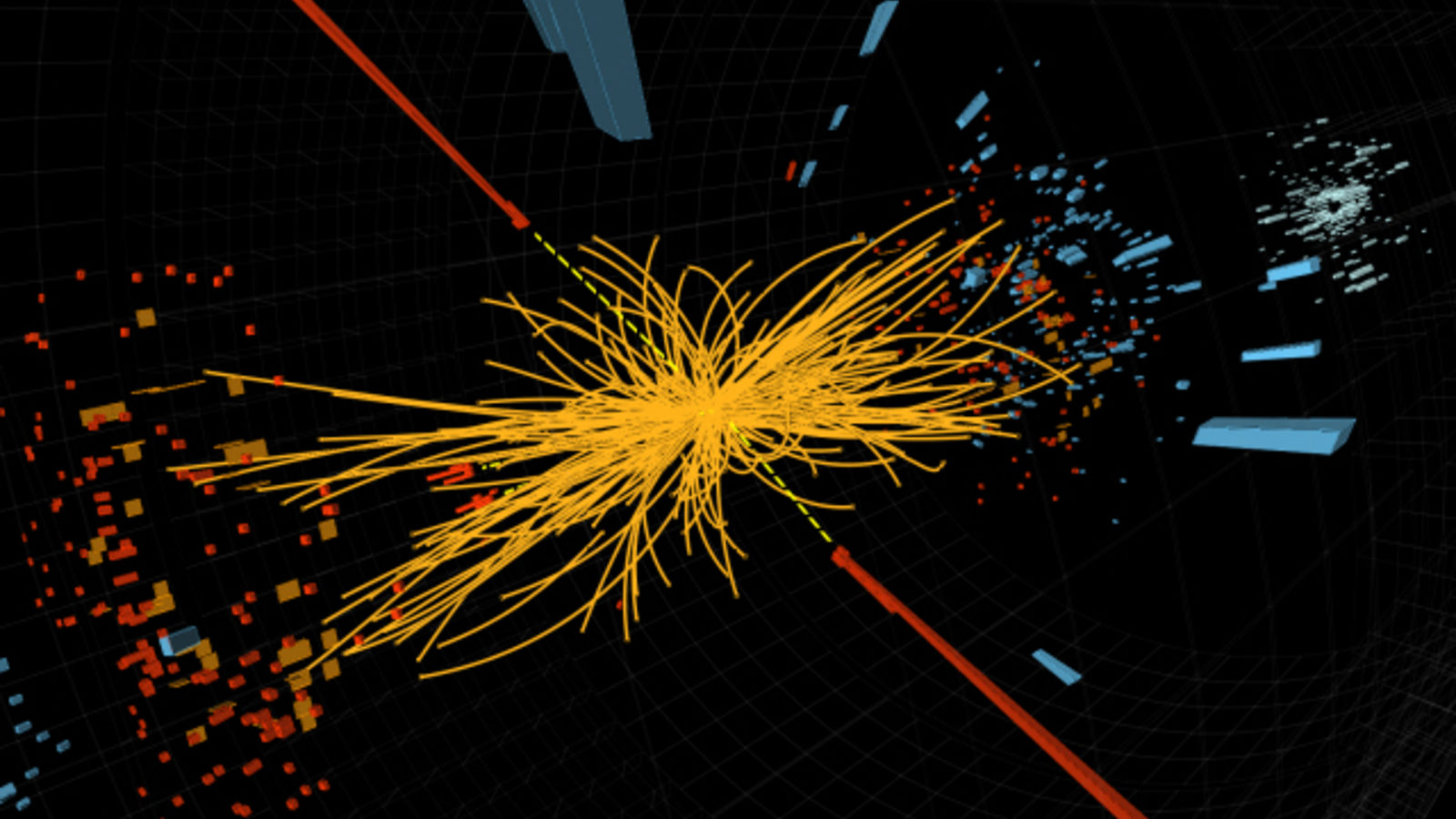For all the media attention the Higgs boson has received over the last few years, it certainly doesn’t stick around very long to soak it all in. Once produced, it decays in less than a sextillionth of a second.
Despite its brevity, the lifespan of the Higgs boson could lead scientists to the next major discovery at the LHC.
Scientists are looking for better ways to measure this property of the Higgs boson to find out if it agrees with predictions from the Standard Model of physics. If it doesn’t, it could be a sign of undiscovered particles or forces at work.
Some particles—like electrons and protons—are extremely stable and remain unchanged for billions of years or more. But many more massive particles—like muons, top quarks and the Higgs boson—are unstable and quickly decay into more stable particles (such as electrons) shortly after they are produced.
By calculating the average lifespan of these unstable particles, scientists can develop a deeper understanding of their properties and the role they play in our larger understanding of physics.
“When a new particle is discovered, the first thing everyone thinks about measuring is its mass,” says Fermilab theorist John Campbell. “But lifetime is a very important fundamental property that we also need to test to better understand the particle.”
But measuring the lifetime of a fundamental particle directly is extremely difficult—if not impossible—because the lifetimes are often so short that they are imperceptible to even the best particle detectors. For instance, even though the Higgs boson moves at close to the speed of light, it travels less than the length of an atom before it decays into other particles.
For this reason, scientists scrutinize a related fundamental property called the width, a measurement of the range of variation in the particle’s mass.
“When the Higgs is produced, it is sometimes produced at exactly 125 GeV, but other times it is produced with a slightly higher or slightly lower mass,” Campbell says. “This is because of a quantum mechanical uncertainty in its mass, which we call the width. The smaller the width, the longer the lifetime.”
Originally, scientists measured the width of the Higgs directly by reconstructing many Higgs bosons from its well-known decay products and then mapping their masses. But because of limited detector resolution, this measurement only constrained the width of the Higgs boson within a factor of 1000 of the value predicted by the Standard Model.
For this latest measurement, scientists on the CMS experiment at the LHC used a clever trick developed by theorists to determine the width of the Higgs boson based not on what they saw in their measurement, but on what they did not see.
“If the Higgs boson had a large width, then we would regularly see its mass fluctuate above 200 gigaelectronvolts,” says CMS physicist Andrei Gritsan, a professor at Johns Hopkins University. “But because we did not see this this happen often, we know that this is a much rarer processes, and we can therefore restrict the maximum size of the width.”
This new measurement is within a factor of six of the width value predicted by the Standard Model—a huge improvement from the previous measurement.
However, Gritsan advises that more research is needed. “It may not be the cleanest way to measure the width of the Higgs boson because we still make the assumption that there are no new, unobserved particles which could affect the Higgs boson production through quantum effects,” Gritsan says. “We need to attack the problem from many directions."
The next run of the LHC will provide heaps of new data that will allow physicists to both search for new particles and probe the fundamental properties of the Higgs boson even further. It will also allow physicists to test this new technique on a number of different measurements.
“This is the beginning of a new field of research where people are realizing the power of this technique as a way to measure and constrain the properties of the Higgs particle,” Campbell says. “We benefit from more data, but we benefit even more from new ideas.”



